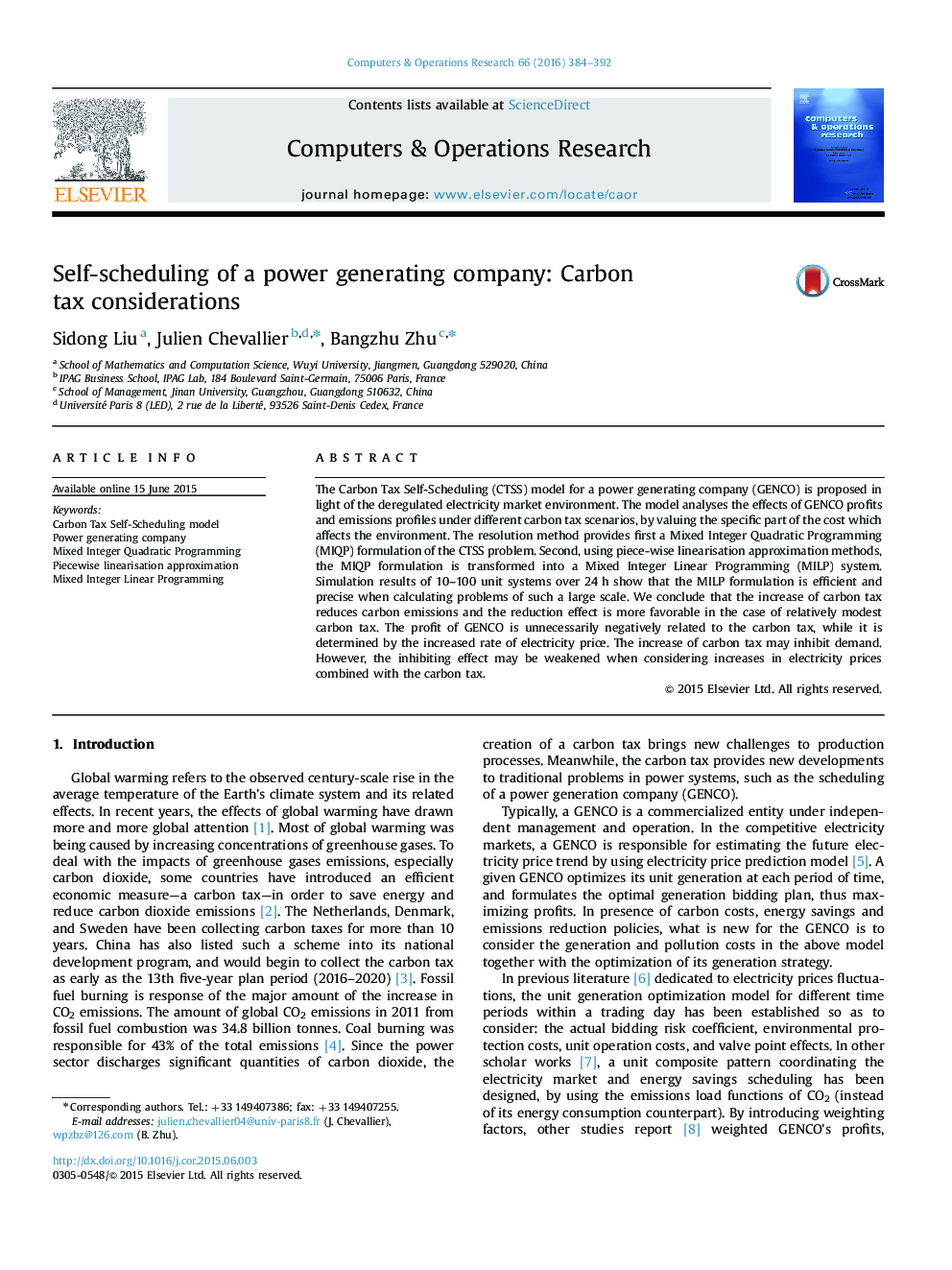| Article ID | Journal | Published Year | Pages | File Type |
|---|---|---|---|---|
| 475001 | Computers & Operations Research | 2016 | 9 Pages |
•Carbon Tax Self-Scheduling Model (CTSS) is developed.•Mixed Integer Quadratic Programming (MIQP) formulation is proposed.•Mixed Integer Linear Programming (MILP) formulation is proposed.•With/without carbon taxes, both approaches are compared.•Simulation results show that the MILP is superior to the MIQP.
The Carbon Tax Self-Scheduling (CTSS) model for a power generating company (GENCO) is proposed in light of the deregulated electricity market environment. The model analyses the effects of GENCO profits and emissions profiles under different carbon tax scenarios, by valuing the specific part of the cost which affects the environment. The resolution method provides first a Mixed Integer Quadratic Programming (MIQP) formulation of the CTSS problem. Second, using piece-wise linearisation approximation methods, the MIQP formulation is transformed into a Mixed Integer Linear Programming (MILP) system. Simulation results of 10–100 unit systems over 24 h show that the MILP formulation is efficient and precise when calculating problems of such a large scale. We conclude that the increase of carbon tax reduces carbon emissions and the reduction effect is more favorable in the case of relatively modest carbon tax. The profit of GENCO is unnecessarily negatively related to the carbon tax, while it is determined by the increased rate of electricity price. The increase of carbon tax may inhibit demand. However, the inhibiting effect may be weakened when considering increases in electricity prices combined with the carbon tax.
